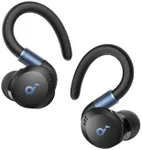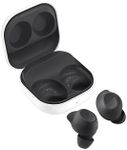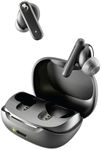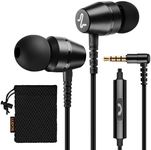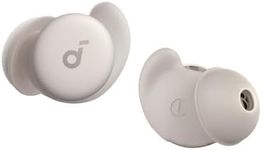Buying Guide for the Best Earbuds Small Ears
Choosing earbuds for small ears can be a bit tricky, but with the right approach, you can find a pair that fits comfortably and delivers great sound. The key is to focus on features that affect fit, comfort, and usability, rather than just sound quality. It's important to remember that everyone's ears are different, so what works for one person may not work for another. Pay attention to the design, size options, and adjustability to ensure you get earbuds that won't fall out or cause discomfort during use.Earbud Size and ShapeEarbud size and shape refer to the physical dimensions and contour of the earbuds themselves. This is crucial for people with small ears because oversized earbuds can cause discomfort, fall out easily, or simply not fit at all. Earbuds generally come in different shapes, such as round, oval, or ergonomic designs that follow the natural curve of the ear. For small ears, look for compact or low-profile earbuds, and avoid bulky or wide designs. Trying out different shapes can help you find the one that sits comfortably in your ear canal without causing pressure.
Ear Tip Sizes and MaterialsEar tips are the soft parts that go into your ear canal, and they come in various sizes and materials like silicone, foam, or rubber. This spec is important because the right ear tip size ensures a secure fit, good sound isolation, and comfort. Most earbuds come with multiple ear tip sizes (small, medium, large), but some brands offer extra-small or extra-short tips for smaller ears. Foam tips can also be a good choice as they compress to fit your ear shape. If you have small ears, always check that the earbuds include small or extra-small tips, and consider trying different materials to see which feels best for you.
Weight and BulkinessThe weight and overall bulkiness of earbuds affect how they feel during extended use. Heavier or bulkier earbuds can put pressure on small ears, leading to discomfort or even pain. Lightweight and slim earbuds are generally better for small ears, as they are less likely to cause fatigue or fall out. When comparing options, look for earbuds described as 'lightweight' or 'ultra-compact.' If you plan to wear them for long periods, prioritize models that are known for being unobtrusive and easy to forget you're wearing.
In-Ear vs. Semi-In-Ear DesignThis refers to how deeply the earbuds sit in your ear canal. In-ear designs go deeper and usually provide better noise isolation, but they can sometimes feel intrusive for small ears. Semi-in-ear designs rest more on the outer ear and may be more comfortable for some people, though they might not block as much noise. If you have sensitive or very small ear canals, you might prefer semi-in-ear designs, while those who want a secure fit for activities like running might opt for in-ear models with small tips.
Stability Features (Wings, Hooks, etc.)Some earbuds come with additional features like ear wings or hooks that help keep them in place. These can be especially helpful for small ears, as they provide extra stability and prevent the earbuds from slipping out. However, if these features are too large or stiff, they can cause discomfort. Look for earbuds with removable or flexible stability features, and make sure they are sized appropriately for smaller ears. If you plan to use your earbuds during exercise or lots of movement, these features can be a big advantage.

